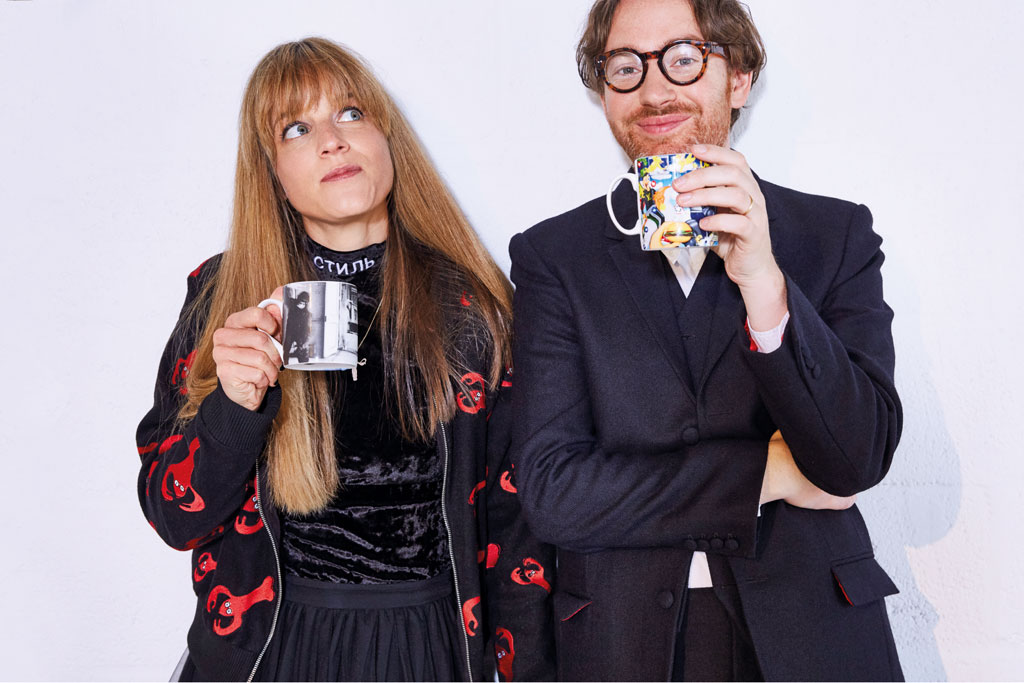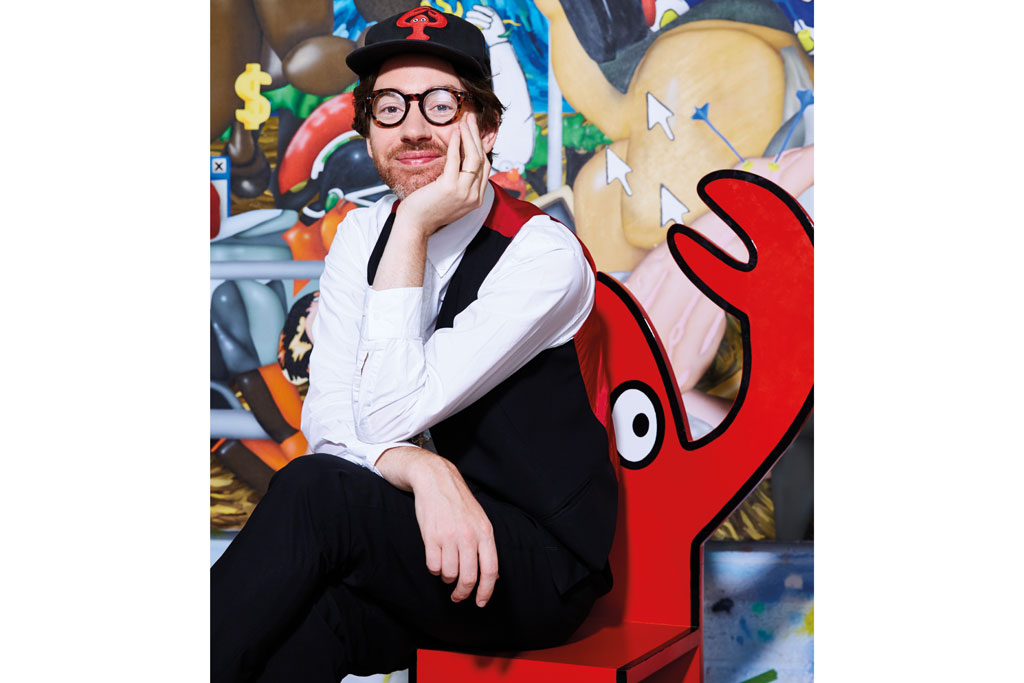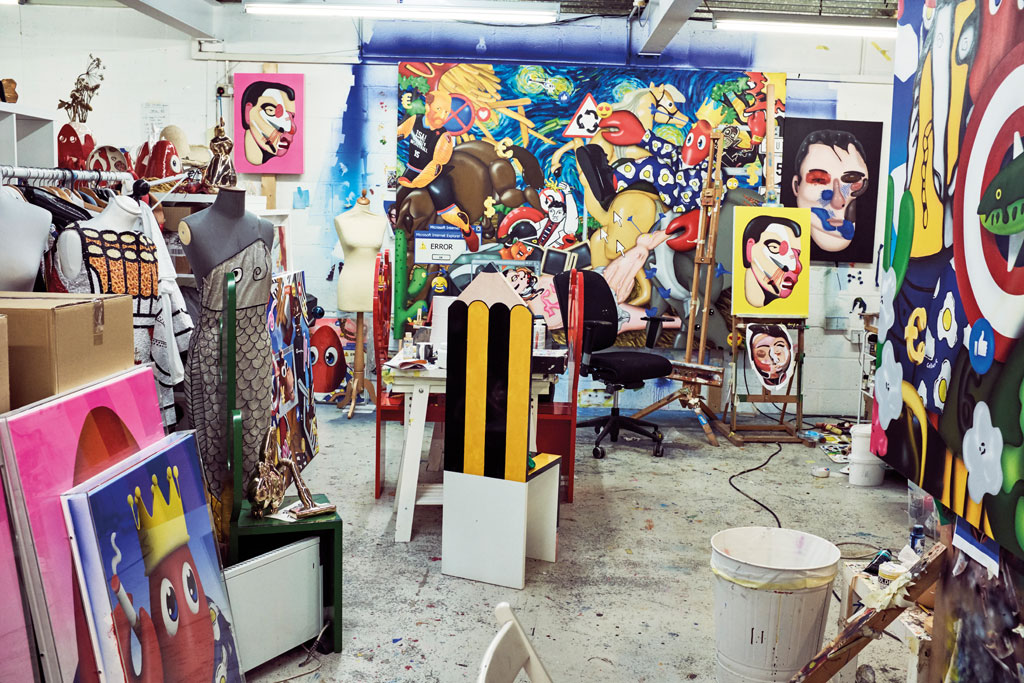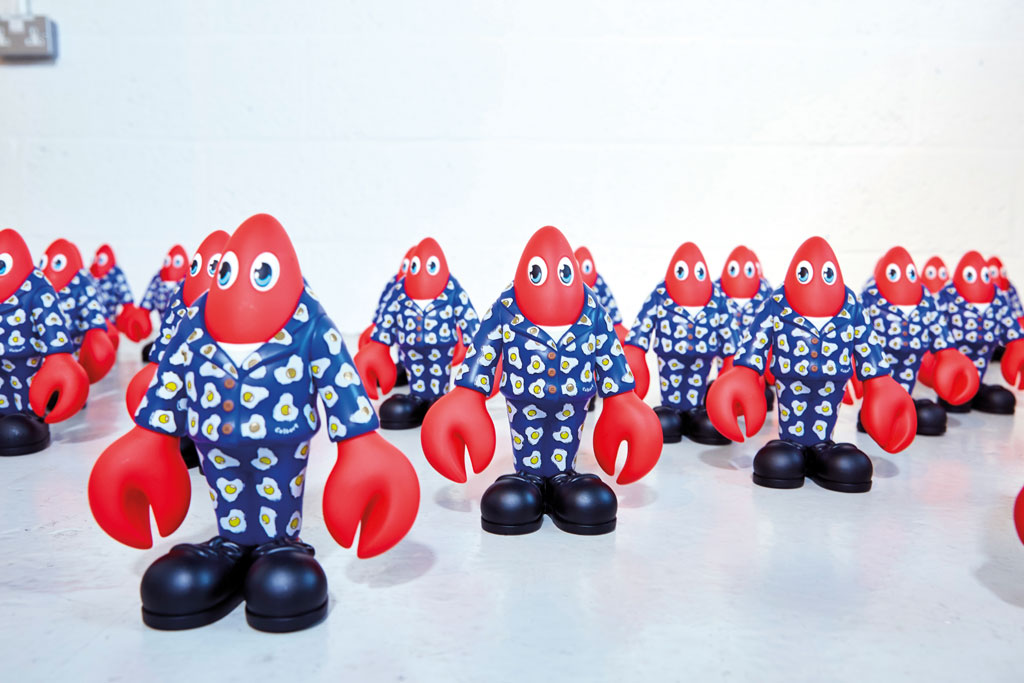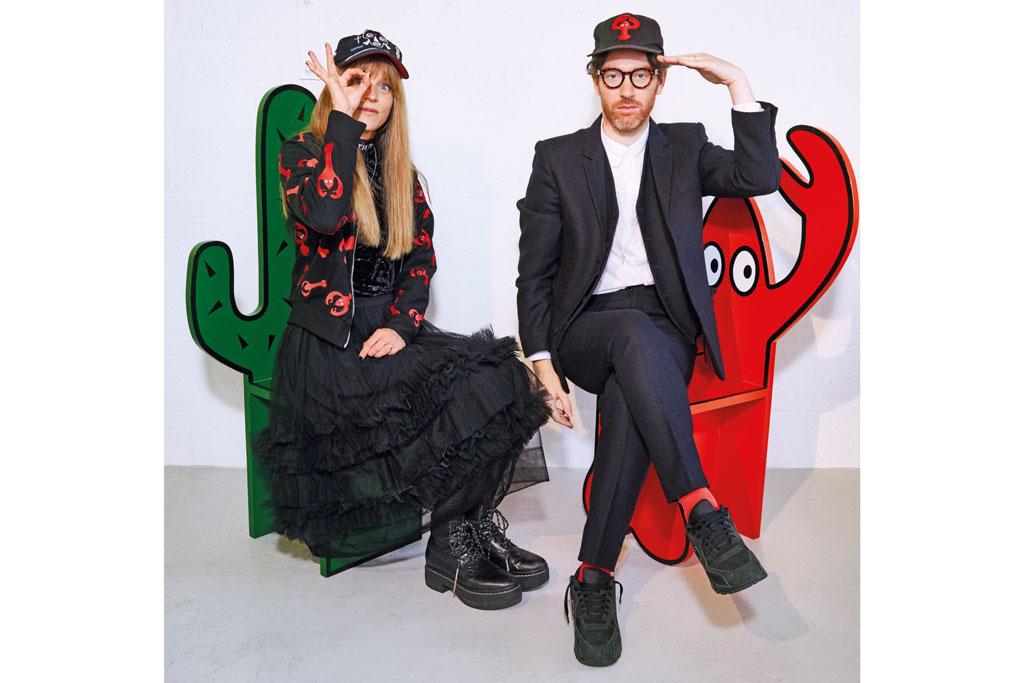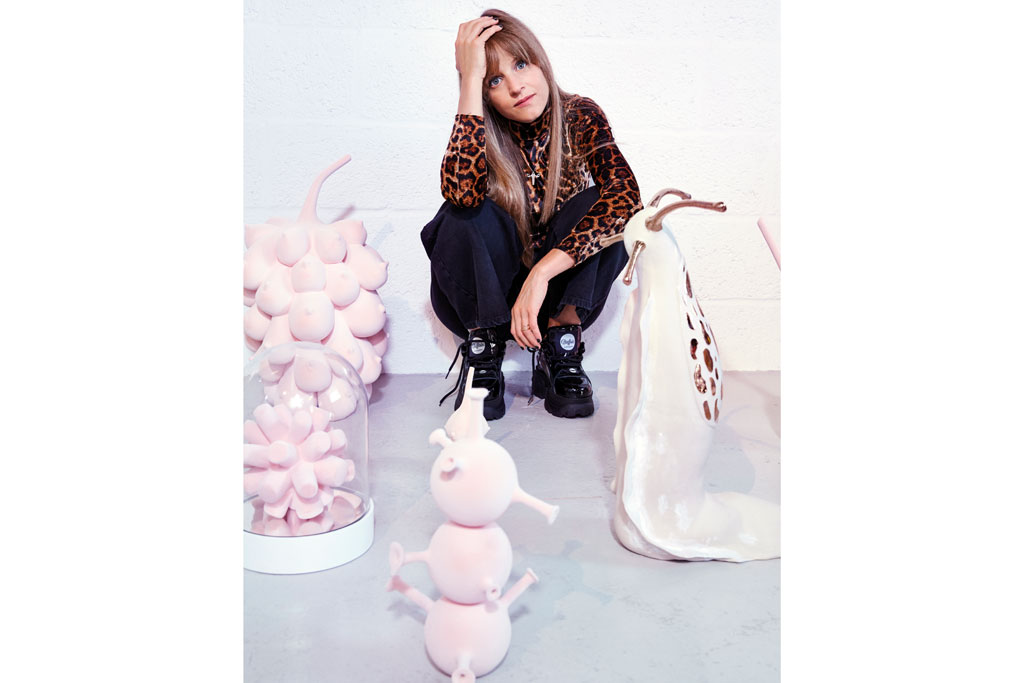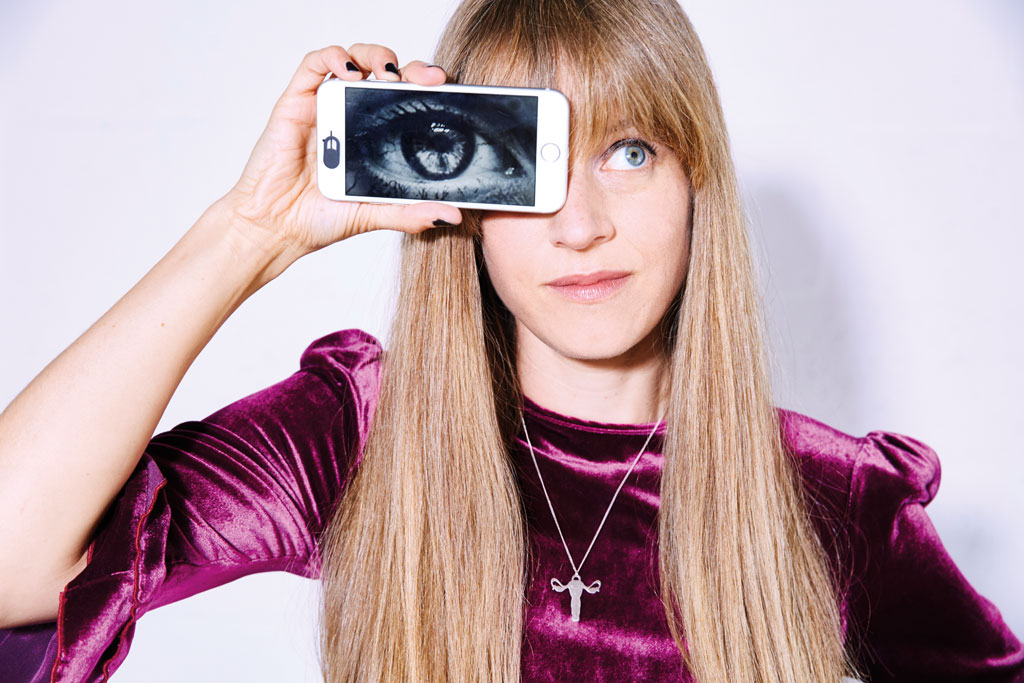Pop Duo: C&TH Meets Charlotte and Philip Colbert
The Colberts talk contemporary art, impersonators, and alter egos...
This post may contain affiliate links. Learn more
Charlotte and Philip Colbert’s work is bold, thought-provoking and performative. Caiti Grove meets the inventive pop art pair in their studio…
Last year, the Royal Academy invited the Colberts to an artists’ lunch. After all, they are a young, fun, creative couple with the kind of fresh, striking work the distinguished members appreciate. One problem: they were double-booked. So what did they do? Just not turn up? Ghost London’s most prestigious art institution?
‘We sent impersonators,’ confesses Charlotte, laughing. ‘We told them: “Whatever happens, don’t talk. Just do things like we do – pose for photographs, mime impersonations. As long as you don’t say anything, we’ll be fine.”’ The ruse worked.
‘They just thought we were really in character,’ adds Philip. ‘Talking was always going to be a disappointment anyway – and they were none the wiser.’ This is entirely in keeping with the Colberts’ irreverent style of art, which embraces the absurd, with more than a touch of cheeky parody of the art world’s traditions.
On their first trip abroad while courting nine years ago, they made a pilgrimage to Friedrich Nietzsche’s house in Switzerland. ‘That was my attempt to try and err…’, Philip says in his light Scottish lilt of his seduction technique, a tiny golden pendant of Fallopian tubes hanging around his neck, ‘We looked for his toenails between the floor boards.’
Now married for five years, they have settled in Spitalfields with their children. Not far away is their shared studio, opposite Shoreditch House. In Charlotte’s half of the space, giant slugs embrace by the doorway, their eye stalks leaning lovingly towards each other. Nearby, two assistants coil white clay into a 3D structure, occasionally blasting it with an industrial hairdryer. In the corner, a huge close-up photograph of a face, its features caught in different oxidised bronze frames, suddenly blinks. This is part of a project triggered by Charlotte’s travels to Korea, where she witnessed the reunion of a family, separated by war for 60 years, ‘at a hotel that looks like a David Lynch Marriott on acid,’ she recalls. Three days later, they were separated again, the husband and father forced back to North Korea.
Charlotte has also captured Sue Tilley on film, the famous subject of Benefits Supervisor Sleeping (1995) by Lucien Freud. They returned together to Freud’s old studio, where Sue posed (and slept) for the painter over many hours as a nude model. Twenty-five years later, Charlotte filmed her in the same position, sprawled naked on a sofa. Looking at Sue through Charlotte’s lens – each part of her body encased in a different rusty frame – the viewer scrutinises her naked body, neck crooked around the armrest of the sofa, left breast fallen across her body. Suddenly, she blinks. Instead of being just an image, analysed on the walls of a gallery – and occasionally derided as ‘Fat Sue’ – ‘she opens her eyes and confronts the audience that has appropriated her body for so long,’ says Charlotte, smiling broadly. ‘Sue loved it – she was moving from London to Hastings and hadn’t been back to Lucien Feud’s studio for 20 years – it kind of defined her whole relationship to London and that whole period of life’.
A cone shape on a nearby plinth is a mass of breasts topped with a stork. Cast in plaster and covered in dusky pink flock, closer inspection reveals some nipples are missing, sewn up as after a mastectomy. Since the birth of their children, and her experience of hospital maternity units, Charlotte’s creative output has reflected her sense of life postpartum. On shelves nearby, pink ‘Yoni’ vases in the shape of vaginas sit in front of neatly stacked books, ready to be boxed and shipped to customers who purchased them through her website.
On Philip’s side of the studio, a four-strong team works on two different paintings, while two graphic designers create digital works for an upcoming exhibition in Moscow. In the corner, a nine-foot canvas leans against the wall, a work from his first solo show, Hunt Paintings at the Saatchi Gallery. In it, a lobster in a suit clutches a shield borrowed from Captain America and fights a character with a face from a Basquiat picture. Beneath this is a collage of scenes from famous paintings, by the likes of Picasso, Bacon, and Degas. The details are so precise they could have been digitally created – but no, these are oils, as in the original Reubens battle scenes that inspired the work.
Like Yayoi Kusama’s yellow pumpkin and Ai Wei Wei’s large-scale sculptures, these huge canvases transcend cultural differences. They are democratic and open to the masses, amusing and bright for the art historian or the art novice alike, an aspect Philip enjoys. ‘Like [Van Gogh’s] sunflowers, the lobster already had an association to painting, historically,’ he says. ‘As well as Dalí, other artists glorified the lobster as a muse of surrealism. Many people, especially in Asia, don’t necessarily get that – but they resonate with the avatar and the fact that they love nature, and follow the world of the character. That’s why I like character art – it’s easy to lose engagement with people who aren’t into the language of [classical] art.’
This cartoon lobster is also the avatar of Philip’s alter ego, a character who emerges on red carpets, when Philip dons suits worthy of a modern Shakespearean jester. Like Gilbert & George or Andy Warhol, he is – once in character – a work of art himself, and has appeared with his lobster band in leading galleries and Comme Des Garçons stores all over the world. For awards and art parties he and Charlotte live a surrealist fantasy, he in a fried egg suit, she clad in one of his early works, such as a ‘fish’ dress of shimmering sequins, with chips piled up around her feet. In this design nook of his career, Philip designed costumes for Rita Ora’s 2013 world tour, supervised a collaboration between the cartoon lobster and Christian Louboutin, designed a shark armchair with furniture brand Made, and a Snoopy watch with Rolex.
Next to a rail of sequinned ‘Baked Beans Can’ dresses there’s a box of six-inch lobsters in suits, ready to be shipped. These have been sold through his most recent exhibition in South Korea, offering visitors a chance to own a piece of his art for only £200 or so. ‘There’s a more traditional mindset,’ says Philip, defending his commercial approach, ‘that to keep something valuable you need to keep away cheaper associations, because it’s the illusion of luxury that helps support a value of worth.’
It says a lot that ordinary people – not millionaires – shell out for the Colberts’ work. Why? Because bringing objects into your house that reflect who you are – and are judged by everyone from the Ocado driver to your mother-in-law. It has to connect deeply: and clearly the Colberts do just that.
Philip’s solo show ‘Lobster Land’ runs at Multimedia Art Museum Moscow, 18 Sept to 17 Nov. Charlotte will exhibit at Dancing at the Edge of the World at Sara Zanin Gallery Rome, Jan 2020. colbertstudio.co.uk; philipcolbert.com
Art director: NICOLE SMALLWOOD | Photographer: NICKY EMMERSON
READ MORE
The Best Art Exhibitions in the UK | The Best Art Books Ever

